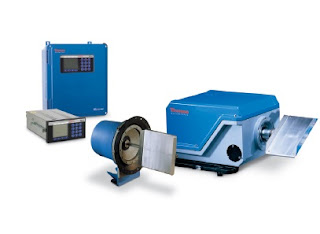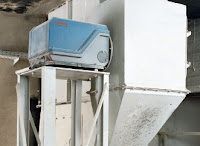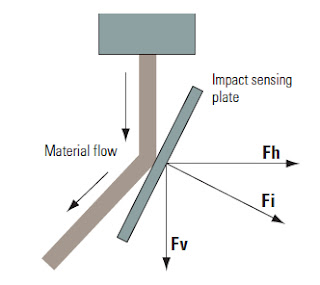Thermo Scientific Ramsey manufactures industrial in-motion weighing, monitoring and inspection equipment used for process control and production control in a wide variety of industrial applications. Products include weighbelt feeders, belt scales, metal detectors, sampling systems, level indicators, conveyor safety switches. Below is an embedded copy of the Thermo Scientific / Ramsey Bulk Weighing and Monitoring Catalog. You can download a copy at the TECO website here.
Providing educational information on flowmeters, industrial control, process instrumentation, valves, and valve automation. Posts include interesting and unique industrial control applications, new product information, and ways of improving efficiency and saving money through proper maintenance, repair, service, and re-manufacturing.
Courtesy of Thompson Equipment Company | TECO-INC.COM | (504) 833-6381
Showing posts with label process weighing. Show all posts
Showing posts with label process weighing. Show all posts
Impact Weighers - Principle of Operation
Impact weighers are in-line instruments used for weighing of bulk materials. They are designed to measure the force generated by the impact of flowing material on a sensing plate. This force creates a mechanical deflection as it impacts the plate. This deflection is measured by a sensor and converted into an electrical signal. That signal is then processed by an electronic controller, which displays the flow rate and total weight.
Advantages:
Impact weighers are designed so that the impact plate can only move horizontally. This means that from the total impact force “Fi,” only the horizontal component “Fh” is measured. In the diagram above, “Fv” is ignored. This guarantees that changes in the weight of the sensing plate, due to material build-up or sensing plate wear, will not affect the zero or accuracy of the system.
 |
| Impact Weighers components (Thermo Scientific Ramsey) |
- Easy installation in difficult process environments
- Measurement is not affected by changing the impact point on the sensing plate • Build-up on the sensing plate cannot influence the zero point
- High reliability and low maintenance
- Mechanical damping system absorbs shocks and damps vibration
- Sensor allows some overload withoutdamage to the system
- Sensor is located in a dust-tight enclosureexternal to the process stream
- Operates accurately in pulsating or surging flows
To learn more, download the Ramsey DE10 and DE20 Impact Weigher brochure here. For more information, contact TECO by visiting https://teco-inc.com or by calling 800-528-8997.
Thermo Scientific Belt Scale Maintenance
Thermo Scientific Model 10-14, 10-17, 10-20, 10-30, and 10-101 Belt Conveyor Scales
Belt conveyor scales have become an important part of most bulk material handling facilities. However, being relatively unobtrusive in most conveyor systems, they are often overlooked or ignored after their initial installation. Lack of simple maintenance will potentially cause significant reduction in the accuracy capabilities of these instruments. Most belt conveyor scales are capable of providing reliable results within ±0.50% of their full-scale rating. Belt conveyor scales that have been certified via the National Type Evaluation Program (NTEP) are capable of providing results that meet the criteria of the National Institute of Standards and Technology (NIST) Handbook-44, which is 0.25%. This is defined as being within 0.25% of actual material load and repeatable within a 0.25% bandwidth.
Regardless of the accuracy capability of the scale design, it is unlikely that these devices will perform as promised if simple maintenance procedures are not strictly adhered to. Every scale installation will develop its own set of operating characteristics; therefore it is absolutely necessary to monitor the scales performance and provide routine maintenance as required. It is generally advised, throughout the belt scale industry, that calibration checks be made frequently during the weeks after initial installation, then to increase the time frame between calibrations as statistical results are obtained. While this is a simple suggestion to follow, all too frequently the increase in time between calibration verifications defaults to only whenever a problem is suspected. By then it is too late, incorrect weighments have been made, processes have been interrupted and inventory levels need other means of verification.
Please see Thermo Scientific Belt Conveyor Scale Maintenance Check List below.
Belt conveyor scales have become an important part of most bulk material handling facilities. However, being relatively unobtrusive in most conveyor systems, they are often overlooked or ignored after their initial installation. Lack of simple maintenance will potentially cause significant reduction in the accuracy capabilities of these instruments. Most belt conveyor scales are capable of providing reliable results within ±0.50% of their full-scale rating. Belt conveyor scales that have been certified via the National Type Evaluation Program (NTEP) are capable of providing results that meet the criteria of the National Institute of Standards and Technology (NIST) Handbook-44, which is 0.25%. This is defined as being within 0.25% of actual material load and repeatable within a 0.25% bandwidth.
Regardless of the accuracy capability of the scale design, it is unlikely that these devices will perform as promised if simple maintenance procedures are not strictly adhered to. Every scale installation will develop its own set of operating characteristics; therefore it is absolutely necessary to monitor the scales performance and provide routine maintenance as required. It is generally advised, throughout the belt scale industry, that calibration checks be made frequently during the weeks after initial installation, then to increase the time frame between calibrations as statistical results are obtained. While this is a simple suggestion to follow, all too frequently the increase in time between calibration verifications defaults to only whenever a problem is suspected. By then it is too late, incorrect weighments have been made, processes have been interrupted and inventory levels need other means of verification.
Establishment of a routine inspection procedure, including not only the belt conveyor scale, but the entire material handling system, will result in an increased confidence in the scale and ultimately greater control of the accuracy it is providing. It is important to remember that the entire conveyor that the belt scale is installed in becomes part of the “weighing system,” and that any changes that occur or are performed within this conveyor can and probably will affect the performance of the scale. Therefore, in addition to a routine scale maintenance procedure it becomes imperative that any and all maintenance performed on the conveyor be reported to the individual or department responsible for the scales performance.
Verification of the basic mechanics of the conveyor system itself is an integral part of the scale maintenance procedure.
Verification of the basic mechanics of the conveyor system itself is an integral part of the scale maintenance procedure.
Subscribe to:
Comments (Atom)



